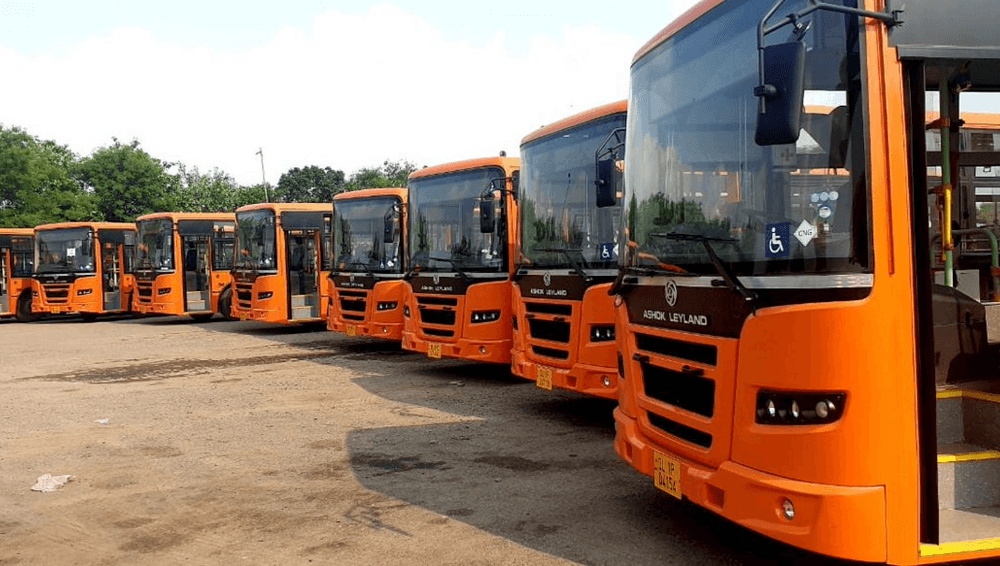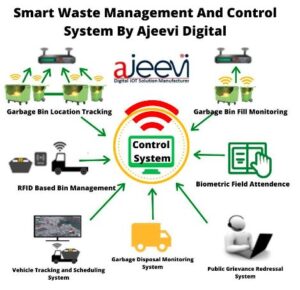


A Vehicle Mounted Reader is a RFID reader that has radio frequency transmitter and receiver to read and write information of a RFID tag. RFID Readers can be pole mounted or vehicle mounted as per requirement. RFID devices use electromagnetic fields to automatically identify and track compatible RFID tags. The tags contain unique electronically stored information, which is read by the readers. RFID Readers are based on PR9200 chip, supporting ISO 18000-6C protocol, middle range RFID reading, fast identification, excellent multi-tag reading, strong anti-collision, IP 66 rugged. It supports fast tag read/write operation with high identification rate. Widely used for fixed asset management, logistic, warehouse inventory, product tracking, vehicle management, production automation and so on.
In today’s world, waste disposal is a major concern for many cities and communities. With the help of the Internet of Things (IoT), it is possible to create smarter solutions for this age-old problem that not only make it easier but also more environmentally friendly. In this article, we will explore how IoT can be used to improve waste collection and disposal processes.
The Internet of Things, or IoT, is a system of devices that are connected to the internet and can communicate with each other. These devices can be anything from cars to toasters, and they are all connected to the internet so that they can share data and communicate with each other.
IoT devices can be used to make waste disposal easier and greener. For example, sensors can be used to detect when a bin is full and then send a notification to the waste management company so that it can be emptied. This would reduce the amount of time that bins are left full, and therefore reduce the amount of waste that is produced.
IoT devices can also be used to track the amount of waste that is being produced by a household or business. This information could be used to help businesses and households reduce their waste production, as well as help waste management companies plan their resources more effectively.
The use of IoT in waste management is still in its early stages, but there is great potential for it to make a positive impact on the environment.
Advantages of Automatic Waste Collection
There are many advantages to using an automatic waste collection system. Perhaps the most obvious is that it can help to reduce the amount of time that you spend on waste disposal. In addition, it can also help to reduce your carbon footprint and save you money.
An automatic waste collection system can be a great way to reduce your carbon footprint. By automatically sorting and recycling your waste, you can help to reduces the amount of greenhouse gases emitted into the atmosphere. In addition, using an automatic system can also help to save water and energy as well as reducing the amount of landfill space required.
Another advantage of using an automatic waste collection system is that it can help you to save money. Automatic systems are often more efficient than manual ones, meaning that they require less manpower to operate. In addition, they often come with a host of features that can help to further reduce your costs, such as sensors that only collect full bags of rubbish and automated sorting systems.
Components of a Smart Waste Management System
A smart waste management system is a comprehensive solution that can help you effectively manage your waste. It typically includes four key components:
The Internet of Things (IoT) can help to make waste disposal easier and greener in a number of ways. For example, smart bins equipped with sensors can help to track how full they are and when they need to be emptied. This can help to reduce the amount of waste that is left on the street or in landfills.
IoT can also help to improve recycling rates by providing real-time data on what materials are being collected and where they are going. This information can be used to improve recycling infrastructure and education campaigns.
Finally, IoT can play a role in reducing food waste by providing information on when food is going bad and needs to be thrown out. This information can be used by grocery stores, restaurants, and households to reduce the amount of food that is wasted each year.
Benefits of an IoT Enabled Smart Waste Collection System
The internet of things (IoT) is revolutionising the way we live and work, and waste management is no exception. An IoT enabled smart waste collection system can bring numerous benefits to businesses, municipalities and households.
A smart waste collection system can help to increase the efficiency of waste management processes. For example, real-time data collected by sensors can be used to optimise routes and schedules for rubbish trucks, resulting in reduced fuel consumption and emissions.
An IoT system can also help to reduce costs associated with waste management. For example, by automatically ordering new bins or dumpsters when they are needed, businesses can avoid the cost of overordering or having to make last-minute arrangements when their current bin is full.
A smart waste management system can also help to improve the sustainability of an organisation’s operations. For example, by monitoring and managing resources such as water and electricity used in rubbish disposal processes, businesses can minimise their environmental impact.
Finally, a smart waste management system can also help to enhance customer service levels. For example, by providing customers with real-time updates on the status of their bin collections or allowing them to report issues directly to the municipality via a mobile app, businesses can improve customer satisfaction levels.
Common Challenges Faced in IoT Enabled Waste Management Solutions
There are many challenges that come with implementing IoT enabled waste management solutions. One of the most common is integrating the various technologies involved. This can be a difficult and costly process, as each technology needs to be compatible with the others in order for the system to work properly.
Another challenge is making sure that the data collected by the various sensors is accurate and reliable. This data is used to make decisions about how to best manage the waste, so it needs to be as accurate as possible. There can be a lot of trial and error involved in getting this right.
Another common challenge is dealing with battery life. Most IoT devices rely on batteries, and managing these batteries can be a challenge. They need to be regularly replaced or recharged, which can add cost and complexity to the system.
Finally, ensuring that the system is secure from hackers is a major challenge. Hackers could potentially gain access to sensitive data or even take control of the system itself, causing all sorts of problems. robust security measures need to be in place to protect against these threats.
Harnessing the smart power of IOT to make waste disposal easier and greener is a great way to help reduce our environmental footprint. By streamlining the process and making it more efficient, we can save time, money, resources, and energy while doing our part to take better care of our planet. With these solutions in place, we are sure to see positive changes moving forward for both us and future generations alike.
AJEEVI, Make & Made in India, digital solutions for various Urban Local Bodies & large Municipal Corporations from East to West , North to South . AJEEVI implemented waste management monitoring application for monitoring daily E-waste collection routines and get real time insights into work hours . Waste Management Monitoring can store the data of waste collection , recycling and disposal facilities. http://www.ajeevi.com


Android Handheld UHF Reader
Automatic Boom Barrier
Automatic Number Plate Reader Camera
Bin Level Sensor
Bio Metrics Machine
Bullet Camera Live
Chlorine Sensor
Data Transmission Unit
Emergency Call Box
Environment Sensor
Face Recognition
Flood Sensor
Fuel Sensor
Galvanized Iron Pole
Gi-Pole
GPS
GPS-AIS140
Handheld HF Reader
Handheld UHF Reader
PTZ Camera
Public Address Speaker
Public Address System
Hydraulic Boom Barrier
IP Bullet Camera
IRIS
Magnetic Sensor
Network Rack
Network Video Recorder
Panic Button
Parking Entry Exit UHF Reader Vehicle Mounted UHF Reader
Passenger information systems
Ph Sensor
Refrigerator Sensor
RFID Tag – HF
RFID Tag – UHF
RFID Tag Metal – UHF
Smart Kiosk
Smart Pole
Soil Sensor
Drainage Sensor
Temperature Sensor
Turbidity Sensor
Ultrasonic Flow Meter Variable Sign Board Weigh Bridge Entry Exit Reader
Thanks for ” Downloading”, “Discovering”, “AJEEVI Products”, hit the submit button requisite information will be in your email box shortly.
Ajeevi Offer “Enterprise IoT Solutions” with in-house R&D, Capability of manufacturing IOT devices.
505, Tower A-1, Corporate Park
Noida 201301, Uttar Pradesh India
presales@ajeevi.com
+91-9654323500